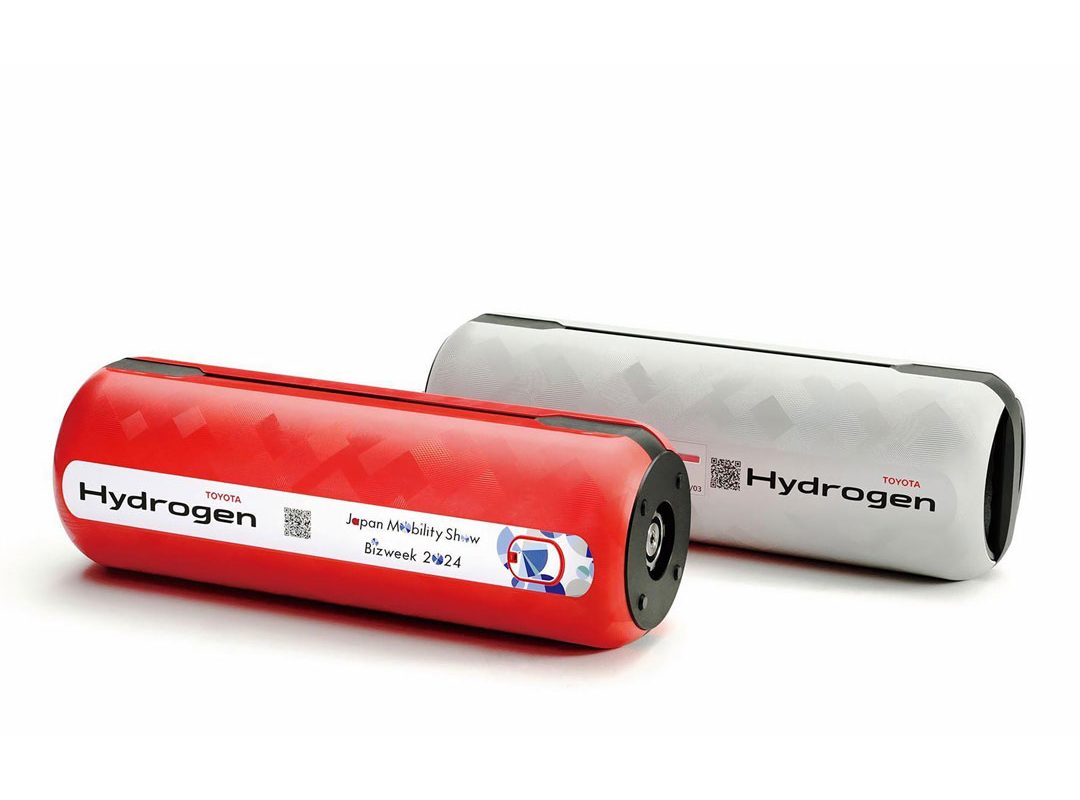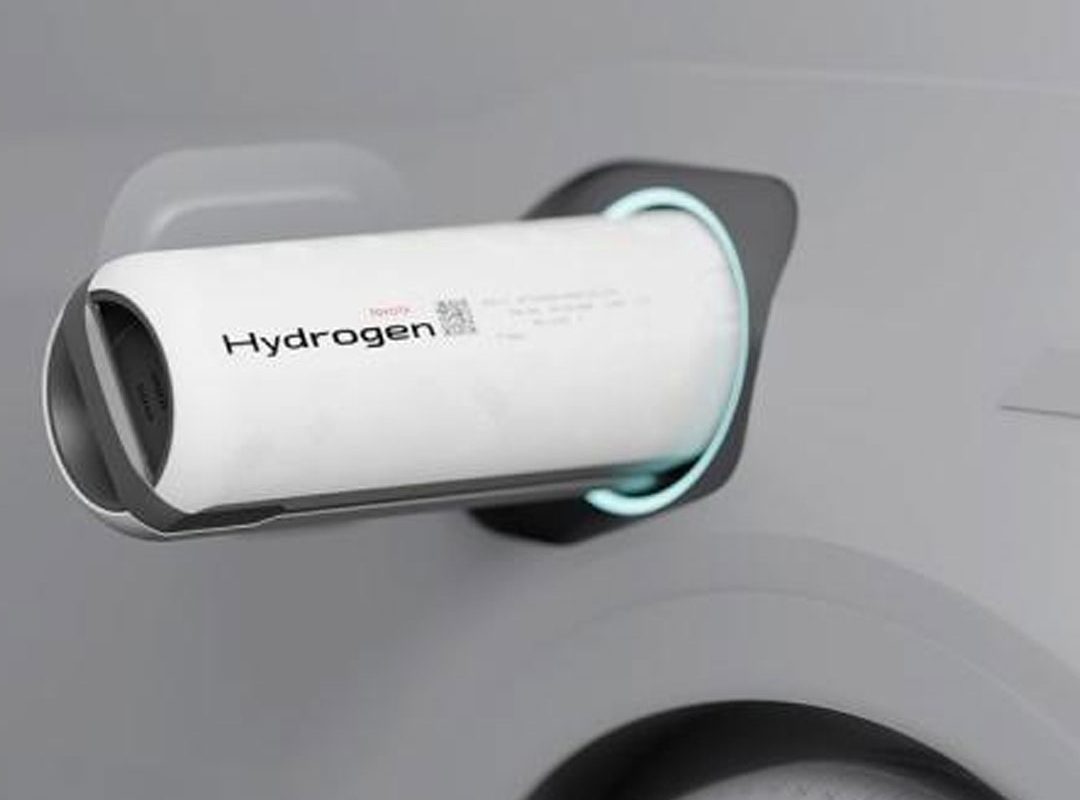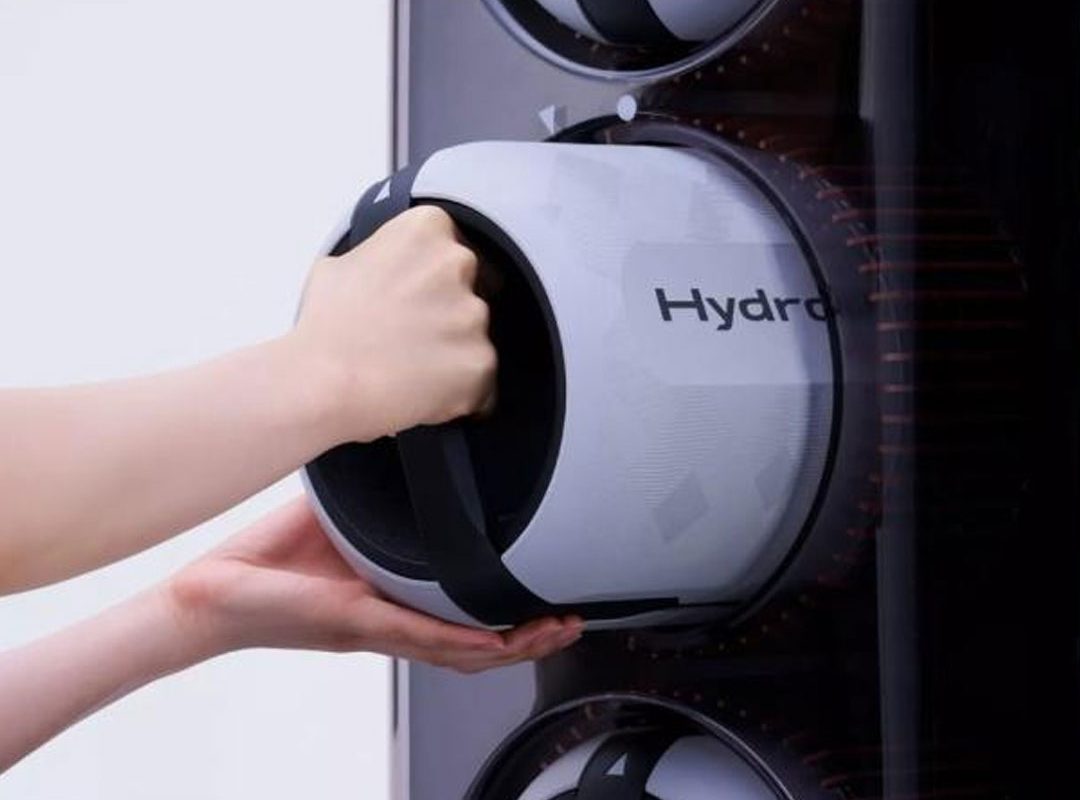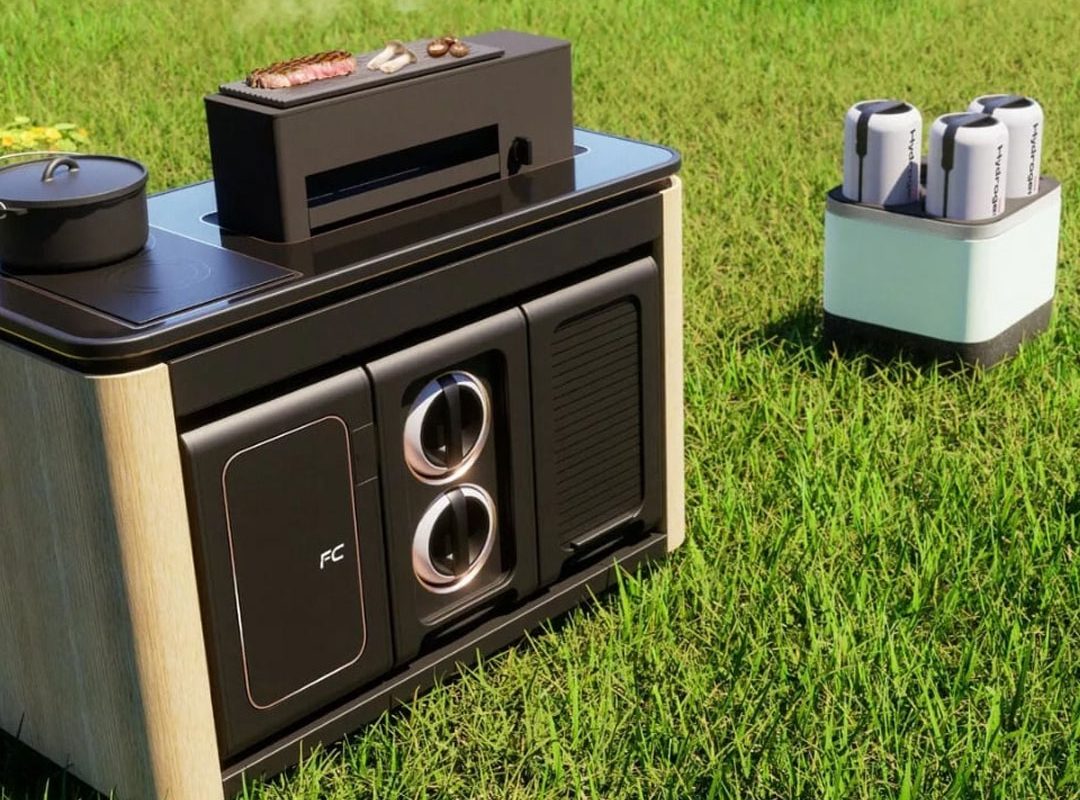New Portable Hydrogen Cartridges from Toyota Change the Game
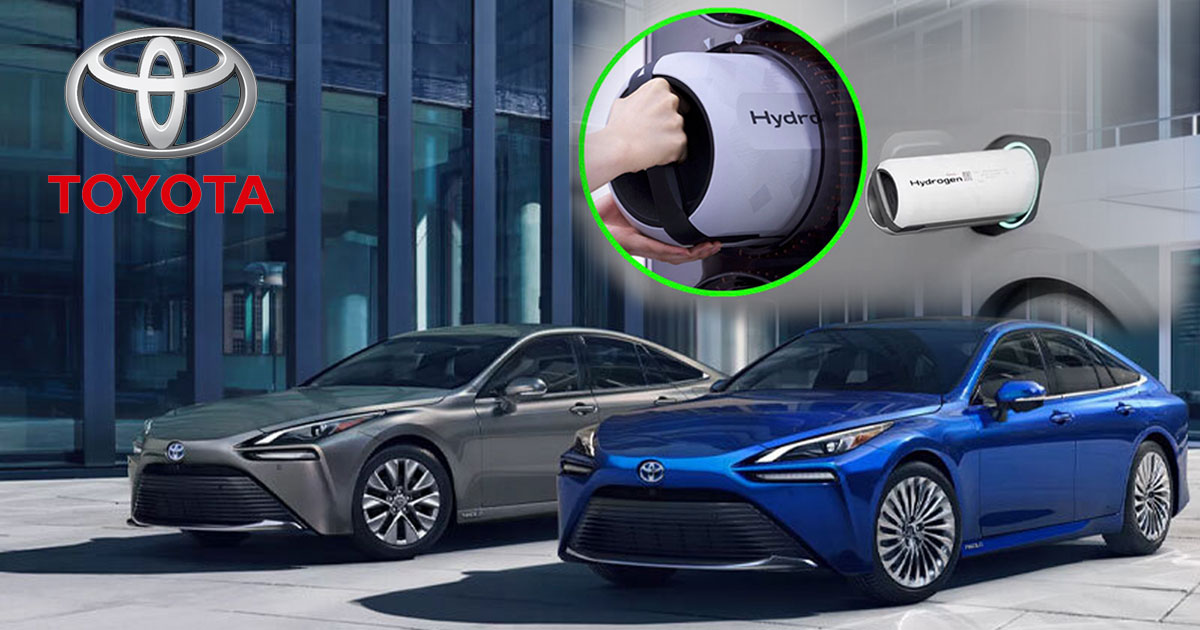
Photo Credit – Toyota
No More Waiting: Revolutionizing Hydrogen Refueling for the Future
Toyota has always been at the forefront of automotive innovation, and its latest push into hydrogen-powered vehicles is no different. As part of their multi-pathway approach to reducing emissions and creating sustainable transportation solutions, they have introduced the concept of portable hydrogen cartridges. These cartridges have the potential to revolutionize hydrogen refueling, making it more convenient, accessible, and efficient for consumers. Imagine being able to refuel your hydrogen-powered car at home with a simple swap of cartridges, similar to how you replace batteries or propane tanks. This futuristic vision is becoming closer to reality thanks to Toyota’s ingenuity.

But what exactly are these portable hydrogen cartridges, and how could they change the game for hydrogen vehicles, particularly Toyota’s hydrogen flagship, the Mirai? Let’s dive into the details.
A Game-Changer for Hydrogen Refueling
Fuel cell electric vehicles (FCEVs) like the Toyota Mirai have long been touted as the future of eco-friendly transportation. They produce zero harmful emissions, relying on hydrogen to generate electricity that powers the car. The main advantage is that FCEVs offer a similar refueling experience to traditional gasoline-powered vehicles, taking only minutes to fill up. However, the reality has been far less convenient for many hydrogen vehicle owners.
The hydrogen refueling infrastructure, particularly in areas outside of Japan and California, has been a significant hurdle. Owners face long waits at the few hydrogen stations available, and the overall reliability of these stations has been less than stellar. Lawsuits and buybacks have even been filed by some frustrated customers due to the lack of adequate refueling options.
Toyota, a long-standing proponent of hydrogen fuel technology, is fully aware of these challenges. In response, they’ve developed a solution that could eliminate the reliance on traditional refueling stations altogether—the portable hydrogen cartridge.
What Are Toyota’s Portable Hydrogen Cartridges?
Think of these hydrogen cartridges like oversized propane tanks. The concept is simple: instead of driving to a hydrogen station and waiting in line to refuel, you could order a batch of these hydrogen cartridges and swap them out at home when your tank runs low. These cartridges would be portable, easy to handle, and could be used to power not just cars, but a range of other devices as well.
In fact, Toyota envisions a future where these cartridges could power everything from camp stoves to entire homes. Hydrogen, after all, is a highly versatile energy source. It can be used as a combustible fuel or converted into electricity through fuel cells like those found in the Toyota Mirai. The possibilities are virtually endless.
The first application of these hydrogen cartridges is already underway. Toyota has teamed up with Rinnai Corporation, a company that specializes in kitchen appliances, to develop a hydrogen-powered cooker. This hydrogen cooker was on display during the Japan Mobility Show Bizweek 2024, showcasing how hydrogen could be used in everyday situations beyond just transportation.
The Specs: What Can One Cartridge Do?
While the idea of portable hydrogen cartridges sounds promising, there are still some logistical questions that need to be addressed. For example, how much hydrogen can one of these cartridges hold, and how practical would it be to use them in a vehicle like the Toyota Mirai?
Toyota hasn’t revealed specific details about the cartridges’ storage capacity, but the label on their computer-generated images indicates that one cartridge holds 4.7 liters of hydrogen at a pressure of 525 bar. At 32 degrees Fahrenheit, this equates to about 161 grams of hydrogen.
To put that into perspective, the second-generation Toyota Mirai has a total hydrogen capacity of 5.65 kilograms, which means you would need about 35 cartridges to fully refuel the car. That’s not exactly ideal for long-distance driving, but as with all new technologies, improvements are likely to come with time. Future iterations of these cartridges could offer greater hydrogen storage, making them more practical for everyday use.
Hydrogen Refueling: No More Waiting in Line
One of the biggest pain points for FCEV owners today is the hydrogen refueling process. With a limited number of stations available, especially outside of major metropolitan areas, drivers often face long lines or even station outages. Toyota’s portable hydrogen cartridges could eliminate this problem by allowing drivers to refuel their vehicles from the comfort of their own homes.
In theory, you could order a batch of these cartridges online or pick them up from a nearby store, much like how you would with propane tanks for a backyard barbecue. When your vehicle’s hydrogen levels run low, you would simply swap out the depleted cartridges for fresh ones. This eliminates the need to search for a hydrogen station and wait in line, making the refueling process much more convenient and hassle-free.
The Future of Hydrogen Power
While Toyota’s portable hydrogen cartridges aren’t mass-produced yet, the company is actively seeking partnerships with startups and other organizations to further develop and commercialize this technology. It’s clear that Toyota sees a future where hydrogen is not only used in vehicles but also as a key energy source for a wide range of applications.
In the long run, Toyota hopes that hydrogen will become as familiar and safe as electricity in our everyday lives. The introduction of portable hydrogen cartridges is a step in that direction, as it simplifies hydrogen storage and makes it more accessible to consumers.
However, it’s important to note that this technology is still in its early stages. It may be some time before we see hydrogen-powered cars with swappable fuel cartridges on the road. However the fact that Toyota is already exploring this concept shows their commitment to advancing hydrogen technology and making it more practical for consumers.
Toyota’s Commitment to Safety
One question that often comes up when discussing hydrogen-powered vehicles is safety. Hydrogen, after all, is a highly flammable gas, and the idea of storing it in pressurized tanks can raise concerns. Toyota, however, has gone to great lengths to ensure that their hydrogen-powered vehicles are as safe as possible.
The Toyota Mirai, for example, has undergone extensive testing to ensure its hydrogen fuel tanks are both durable and safe. The tanks are made from a carbon fiber shell with an additional layer of glass fiber for added strength. This design allows the tanks to withstand pressures of up to 700 bar, well above the operating pressure of the hydrogen stored inside.
In the unlikely event of a leak, the Mirai is equipped with highly sensitive hydrogen sensors that can detect even the smallest traces of gas. These sensors are strategically placed throughout the vehicle, and if a leak is detected, the system automatically shuts down the fuel valves to prevent any further release of hydrogen.
Toyota has also taken extra precautions to ensure that the hydrogen tanks are separated from the vehicle’s cabin. In the event of a leak, the gas would be safely vented into the atmosphere, where it would dissipate harmlessly.
What’s Next for Hydrogen-Powered Vehicles?
Toyota’s introduction of portable hydrogen cartridges is just one part of their broader strategy to promote the adoption of hydrogen-powered vehicles. While electric vehicles (EVs) have dominated the conversation in recent years, Toyota remains committed to hydrogen as a viable alternative to battery-electric power.
Hydrogen offers several advantages over traditional batteries. For one, hydrogen-powered vehicles have a much longer range than most EVs, and they can be refueled in a matter of minutes rather than hours. Additionally, hydrogen fuel cells produce zero emissions, making them an environmentally friendly option for the future of transportation.
However, hydrogen’s biggest challenge has always been infrastructure. Without a widespread network of refueling stations, it’s difficult for hydrogen-powered vehicles to gain mainstream adoption. That’s where Toyota’s portable hydrogen cartridges come in. By allowing drivers to refuel at home, these cartridges could help overcome one of the biggest obstacles facing hydrogen technology today.
Conclusion: A New Era of Hydrogen Power
Toyota’s portable hydrogen cartridges represent a significant step forward in the development of hydrogen-powered vehicles. While the technology is still in its early stages, the potential for these cartridges to simplify refueling and make hydrogen more accessible is enormous.
As Toyota continues to refine and develop this technology, we could be looking at a future where hydrogen-powered vehicles are as common as gasoline-powered cars. With their commitment to innovation, safety, and sustainability, Toyota is leading the charge into a new era of hydrogen power.

